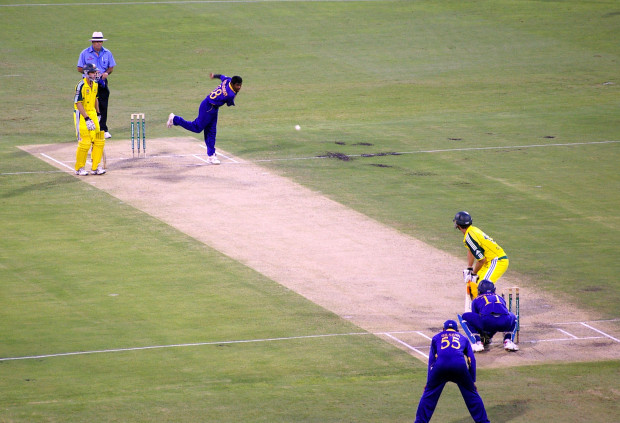How is One Day International cricket played?
IT isn’t an Australian summer without some cricket. For the uninitiated, Leon Saw gives you a quick run-through on the basics of One Day International Cricket.
One Day International (ODI) Cricket is synonymous with summer in Australia, and until I actually understood how it was played, the game to me had been this tedious, drawn-out affair of people loitering around an oval field, occasionally punctured by the sight of them wildly celebrating some highlight or another of the match (the significance of which was utterly lost on me).
It’s thus a testament to the instruction and patience of some of my cricket-obsessed friends in Australia that I now can not only make sense of the variety of numbers on an ODI cricket score, but I can actually derive some enjoyment from following a game of ODI cricket as well.
So how is ODI cricket played?
An ODI cricket match is played by two 11-player teams on an oval playing field. The playing field varies in size depending on the stadium games are played at.
At the start of a game, one team (the team that is bowling the ball) will have all its players on the field, each in a strategic position, while the opposing team (the team that is batting) will have two players with cricket bats (batters) on a rectangular pitch in the middle of the oval. The two batters will stand at opposing ends of the pitch, facing each other. Behind each batter will be three upright wooden poles, collectively known as a wicket.
During the match, designated players from the team that is bowling (bowlers) will take turns to bowl cricket balls from one end of the rectangular pitch towards the wicket behind the batter at the other end.
If a ball makes it past the batter and hits the wicket, he or she will be dismissed and replaced by another batter from his or her team. The batter will also be dismissed and replaced if he or she is deemed, by the umpire, to have used his or her body to prevent the cricket ball striking the wicket.
To forestall dismissal, batters will usually bat away balls they feel have a high chance of striking the wicket. Batting the cricket ball this way not only prevents dismissal, but also gives the batter an opportunity to score runs, which is important as the team with the most runs at the end of the game wins!
But if a player from the bowler’s team (including the bowler) manages to catch that ball before it touches the ground and within the field of play, the batter will be dismissed and replaced.
If the ball reaches the boundary of the playing field, the batter is awarded four runs. If the ball goes beyond without touching the boundaries of the playing field, the batter scores six runs.
The batter can also score a run by running across the rectangle pitch and reaching the other end, while his or her teammate positioned across the pitch from him does the same. Both batters can keep running up and down the pitch to score multiple runs.
The best time during the match for batters to score a run, is when the ball is sufficiently far away from the wickets, and players in the opposing team are out of position to reach the ball. Otherwise, a player from the opposing team may have a chance to retrieve the ball and strike the wickets before the batters manage to score a run, thus causing the batter’s dismissal.
Runs will also be awarded to the batter’s team if the bowler is deemed, by the umpire, to have bowled the cricket ball unfairly.
All that will go on until either the ball is bowled 300 times or 10 batsmen are dismissed.
Both teams will then swap roles, and the team that is now batting will endeavour to score enough runs to overhaul their opponent’s run tally. However, they’ll have to do so before the last ball is bowled or their tenth batsman is dismissed. As such, the team that is now bowling will do their best to win by limiting the runs the opposing team gets until the end of the game.
So is it all starting to make sense now? There will be an ODI match between Australia and the West Indies taking place at the Melbourne Cricket Ground this February 10 – and it may be the perfect opportunity for you to apply your newfound knowledge of the game of cricket!



